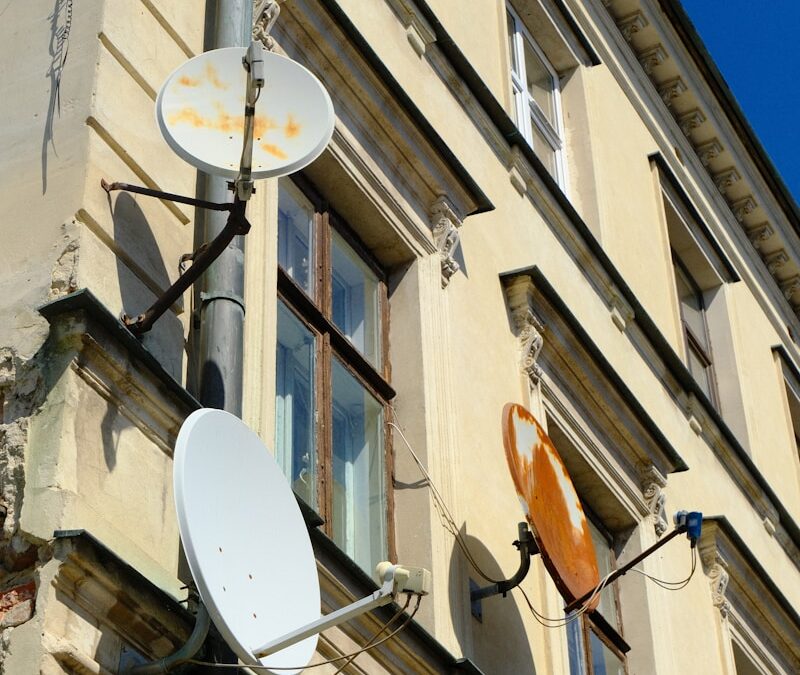The Evolution of IoT Connectivity: From Traditional to Emerging Technologies
Understanding the Role of Emerging Connectivity Technologies in IoT
Emerging connectivity technologies in IoT are reshaping the landscape of how devices communicate within the Internet of Things (IoT) ecosystem. As IoT continues to expand, especially in tech-forward regions like Saudi Arabia and the UAE, the demand for reliable, efficient, and scalable communication protocols has never been greater. Traditional options such as Wi-Fi and Bluetooth have long been the go-to solutions for IoT connectivity. However, with the rapid advancements in technology and the increasing complexity of IoT applications, new connectivity technologies are stepping into the spotlight, offering alternatives that may better meet the specific needs of modern IoT deployments.
These emerging technologies, including Narrowband IoT (NB-IoT), Low Power Wide Area Networks (LPWANs), and 5G, are designed to address some of the limitations inherent in traditional connectivity options. For instance, while Wi-Fi is widely available and offers high data transfer rates, it can be power-hungry and less effective over long distances. Similarly, Bluetooth is suitable for short-range communication but may fall short in applications that require broader coverage or lower power consumption. Emerging technologies aim to fill these gaps, offering enhanced connectivity solutions that can support the growing demands of IoT ecosystems in smart cities like Riyadh and Dubai.
As businesses and government entities in these regions continue to invest in IoT for everything from smart infrastructure to advanced healthcare systems, understanding the benefits and trade-offs of these emerging connectivity options is crucial. Organizations must carefully evaluate how these technologies stack up against traditional options like Wi-Fi and Bluetooth to make informed decisions that align with their specific IoT needs.
Comparing Wi-Fi, Bluetooth, and Emerging Connectivity Technologies in IoT
When it comes to emerging connectivity technologies in IoT, each option presents its own set of advantages and challenges. Wi-Fi, for instance, is a well-established technology that offers high-speed data transmission and is widely supported by various devices. It is particularly effective in environments where bandwidth and speed are critical, such as in smart homes or office settings. However, Wi-Fi’s power consumption and limited range can be drawbacks, especially for IoT applications that require extensive coverage or long battery life, such as in large-scale smart city projects in Riyadh or Dubai.
Bluetooth, on the other hand, is known for its low power consumption and simplicity, making it ideal for short-range, low-bandwidth applications like wearable devices or home automation systems. Yet, its limited range and potential interference issues can be significant limitations for more complex IoT networks that require robust, wide-area connectivity.
Emerging technologies like NB-IoT and LPWANs address many of these limitations by offering low-power, long-range connectivity options that are particularly suited for large-scale IoT deployments. NB-IoT, for example, is designed to provide extended coverage and deep penetration in challenging environments, such as underground or in remote areas. This makes it an excellent choice for applications like smart metering or environmental monitoring, where devices are often spread out over vast areas and need to operate on minimal power.
Similarly, LPWAN technologies, including LoRaWAN and Sigfox, are tailored for low-bandwidth, long-range communication, making them ideal for IoT applications that involve large numbers of devices transmitting small amounts of data over long distances. These technologies are particularly beneficial in smart agriculture, logistics, and industrial IoT, where connectivity needs to be both reliable and cost-effective.
Strategic Considerations for Adopting Emerging Connectivity Technologies in IoT
Evaluating the Suitability of Emerging Technologies for Specific IoT Applications
As organizations in Saudi Arabia, the UAE, and other tech-savvy regions evaluate the adoption of emerging connectivity technologies in IoT, it is crucial to consider the specific requirements of their IoT applications. Not all connectivity technologies are created equal, and the choice of the right technology should be driven by the specific use case, environmental conditions, and long-term goals of the project.
For instance, in smart city initiatives, where vast networks of sensors and devices need to communicate over large areas, technologies like NB-IoT or LPWANs may offer significant advantages over Wi-Fi or Bluetooth. These emerging technologies can provide the necessary coverage and power efficiency to support applications like smart street lighting, traffic management, and environmental monitoring, which are critical components of the smart city vision in places like Riyadh and Dubai.
Conversely, for IoT applications that require high data throughput and are confined to smaller, more controlled environments, such as smart buildings or connected healthcare systems, traditional options like Wi-Fi might still be the best choice. Wi-Fi’s ability to handle large amounts of data at high speeds makes it suitable for applications where data transfer is critical, such as in smart hospitals or IoT-enabled industrial facilities.
The Future of IoT Connectivity: Trends and Predictions
Looking ahead, the landscape of emerging connectivity technologies in IoT is expected to evolve rapidly, with new advancements continually pushing the boundaries of what is possible. The rollout of 5G networks, for example, is poised to be a game-changer for IoT, offering ultra-low latency, massive device connectivity, and unprecedented data transfer speeds. This will open up new possibilities for IoT applications in areas such as autonomous vehicles, real-time industrial automation, and advanced healthcare systems.
In regions like Saudi Arabia and the UAE, where digital transformation is a key focus, the adoption of 5G and other emerging technologies is likely to accelerate, driving further innovation in IoT. The integration of AI and blockchain with IoT is another trend to watch, as these technologies can enhance the security, efficiency, and scalability of IoT networks, making them more robust and adaptable to future needs.
As these trends unfold, it is essential for businesses and government entities to stay informed about the latest developments in IoT connectivity. By understanding the strengths and limitations of both traditional and emerging technologies, organizations can make strategic decisions that ensure their IoT deployments are not only successful today but also future-proofed for the challenges and opportunities of tomorrow.
Conclusion: Making Informed Choices in IoT Connectivity
In conclusion, the choice between traditional options like Wi-Fi and Bluetooth and emerging connectivity technologies in IoT is not always straightforward. Each technology has its own set of benefits and drawbacks, and the right choice depends on the specific needs of the IoT application in question. As regions like Saudi Arabia, the UAE, Riyadh, and Dubai continue to lead the way in digital transformation, understanding and adopting the right connectivity technologies will be key to the success of their IoT initiatives.
By carefully evaluating the options, considering the unique requirements of each project, and staying abreast of emerging trends, organizations can ensure that their IoT deployments are efficient, scalable, and ready to meet the demands of the future. The evolving landscape of IoT connectivity offers exciting possibilities, and those who make informed, strategic choices today will be well-positioned to lead in the increasingly connected world of tomorrow.
—
#IoTConnectivity, #EmergingTechnologies, #DigitalTransformation, #SmartCityProjects, #SaudiArabiaTech, #UAEInnovation, #5GInIoT, #AIAndBlockchain, #SmartInfrastructure, #IoTDevelopment













